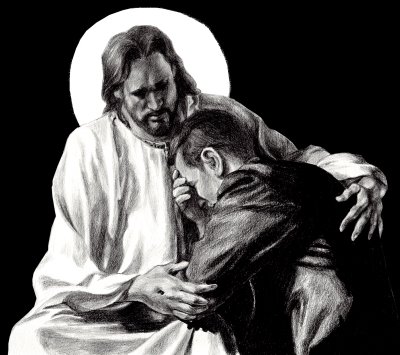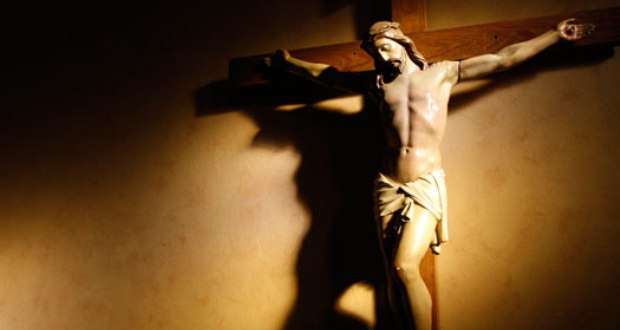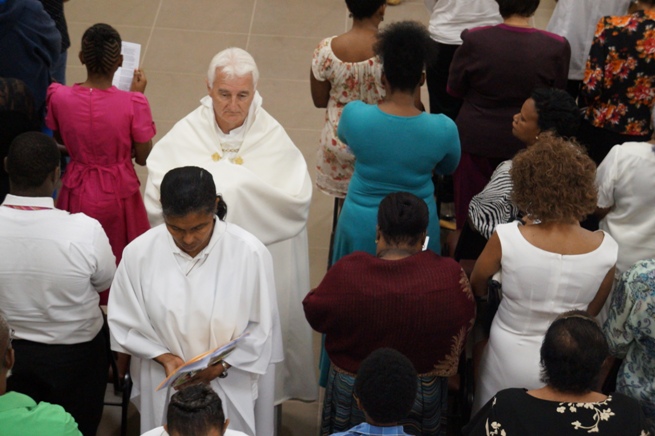Doubting Thomas – The Way Of Reconciliation


{play}images/stories/audio/doubting_thomas.mp3{/play}
In an article I read some time ago by Hispanic theologian, Roberto S. Goizueta, there was an account of the tragedy that befell a five year old African American child in inner-city Boston. Kai Leigh Harriot was playing in the porch of her home one day, when she was struck by a stray bullet from a drive-by. The bullet severed her spine and left her paralysed.
The Boston Globe described the trial scene three years later of Anthony Warren, the man charged with the shooting. When the judge asked Kai Leigh to tell the court what happened to her, the child’s voice broke as soon as she mentioned the word “porch.” After her mother had comforted her, she looked up from her blue wheel chair and confronted Warren. “What you done to me was wrong,” she said. “But I still forgive you…” Warren, who t
ill then had insisted on his innocence, approached the family and begged their forgiveness. Kai’s mother shook his handcuffed right hand and embraced him. Asked later by a reporter why she forgave a man who shot her, the little girl shyly replied: “I wanted him to tell the world the truth.”
One reads sometimes of extraordinary examples of forgiveness that defy human expectations. At times among victims of society, where one ordinarily expects to find anger and retributive demands, what one discovers instead is an astonishing generosity. Like all prophets such victims confront our littleness with a love that challenges and exposes, because it refuses to be bound by the narrowness we tend to remain within.
In the narratives of Jesus after the resurrection, the Gospels had already laid out this paradigm of reconciliation. Among those who caused Jesus’ suffering, none contributed perhaps more than the apostles, his fair-weather friends, who abandoned him at precisely the moment when he needed them.
We must imagine then the drama implied in his meeting with them after he rose. How would he deal with them? Would he throw what they did in their faces? If we take the forms of Jesus’ presence as ‘encounters’ rather than ‘appearances,’ we grasp more accurately perhaps the nature of the situation.
From this perspective, the wounds are not just signs of bodily resurrection; they also constitute the evidence of betrayal. Seeing the wounds, Peter and the others had to have made the connection between how they acted and what subsequently happened to Jesus. Would he now condemn them? His response, however, is as utterly unexpected as his presence itself. His first words are “Peace be with you,” and he asks if they have anything to eat. They give him a piece of baked fish, which he takes and eats in front of them. In other words, Jesus offers them peace before they even acknowledge what they did. Then he invites himself to dinner. That is his revenge for their betrayal; he volunteers to share a meal with them.
In St. John, we have the famous scene of “doubting Thomas.” There too Jesus “shows them his hands and his side.” The wounds here again are not just evidence of resurrection but also instruments of reconciliation. Jesus’ invitation to “put your finger here…” is what elicits Thomas’ response, “My Lord and my God.” The invitation to touch and see is not offered as a sign of condemnation but as an overture of forgiveness.
What Jesus showed by his action is that it is mercy that generates repentance. We do not have to repent first before receiving mercy. Rather, it is mercy itself that makes repentance possible. The apostles remained paralysed until the crucified and risen Lord showed them his wounds for their acknowledgement, yet offering pardon and reconciliation. Only then could Thomas confess “My Lord and my God.” Anthony Warren, the felon, remained defensive and paralyzed in his own way, until his victim, an eight year old child, confronted him with her wounds: “What you done to me was wrong, but I still forgive you.” Only then could he admit his guilt and confess sorrow for his action. Confession is not an extrinsic quality either in the case of the disciples or in Warren’s, but intrinsic to the act of forgiveness itself. And it’s the generosity of the victim that makes everything possible.
Ultimately, of course, we cannot make full reparation for the suffering we cause in the world. We can never wipe such suffering out of existence. It remains part of our history and our future. Kai Leigh Harriot, we must remember, is still paralyzed. What conversion does is to reconstitute relationships on an entirely new foundation, based on mercy, confession, penance – and solidarity. The aim of reconciliation is the generation and nurture of a new communion.
It is the victim who makes this possible. “The lamb redeems the sheep,” as the old Easter sequence, Victimae Paschali Laudes, expressively put it. In the paradox of the Gospel, it is those who follow Jesus through crucifixion and resurrection, who embody the good news that the way of mercy and forgiveness is the way, a different way, to live.
The community of such persons, in theological terms, is the ecclesia crucis, or “the Church of the Cross,” “the Suffering Church.” And their function is exactly the same as the Cross of their name. They mediate forgiveness and reconciliation, and the hope of a world precisely without victims.
This is not knowledge reserved for theologians or people who have made the Scriptures their profession. It’s available to everyone, to every follower, in the poorest of circumstances. Thus behind Kai Leigh’ outlook we can safely assume certain forms of home catechesis. What we also see, of course, is that even in matters like these a little child can lead them.






